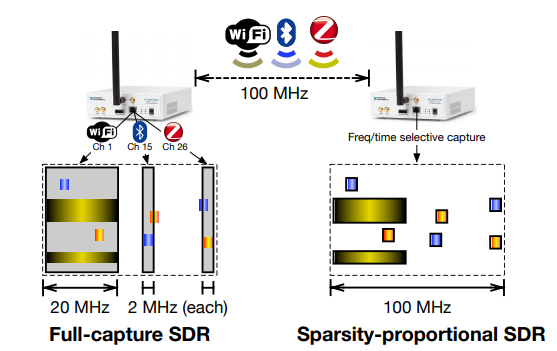We present SparSDR, a resource-efficient architecture for softwaredefined radios whose backhaul bandwidth and compute power requirements scale in inverse proportion to the sparsity (in time and frequency) of the signals received. SparSDR requires dramatically fewer resources than existing approaches to process many popular protocols while retaining both flexibility and fidelity. We demonstrate that our approach has negligible impact on signal quality, receiver sensitivity, and processing latency. The SparSDR architecture makes it possible to capture signals across bandwidths far wider than the capacity of a radio’s backhaul through the addition of lightweight frontend processing and corresponding backend reconstruction to restore the signals to their original sample rate. We employ SparSDR to develop two wideband applications running on a USRP N210 and a Raspberry Pi 3+: an IoT sniffer that scans 100 MHz of bandwidth and decodes received BLE packets, and a wideband Cloud SDR receiver that requires only residential-class Internet uplink capacity. We show that our SparSDR implementation fits in the constrained resources of popular low-cost SDR platforms, such as the AD Pluto.

|
|